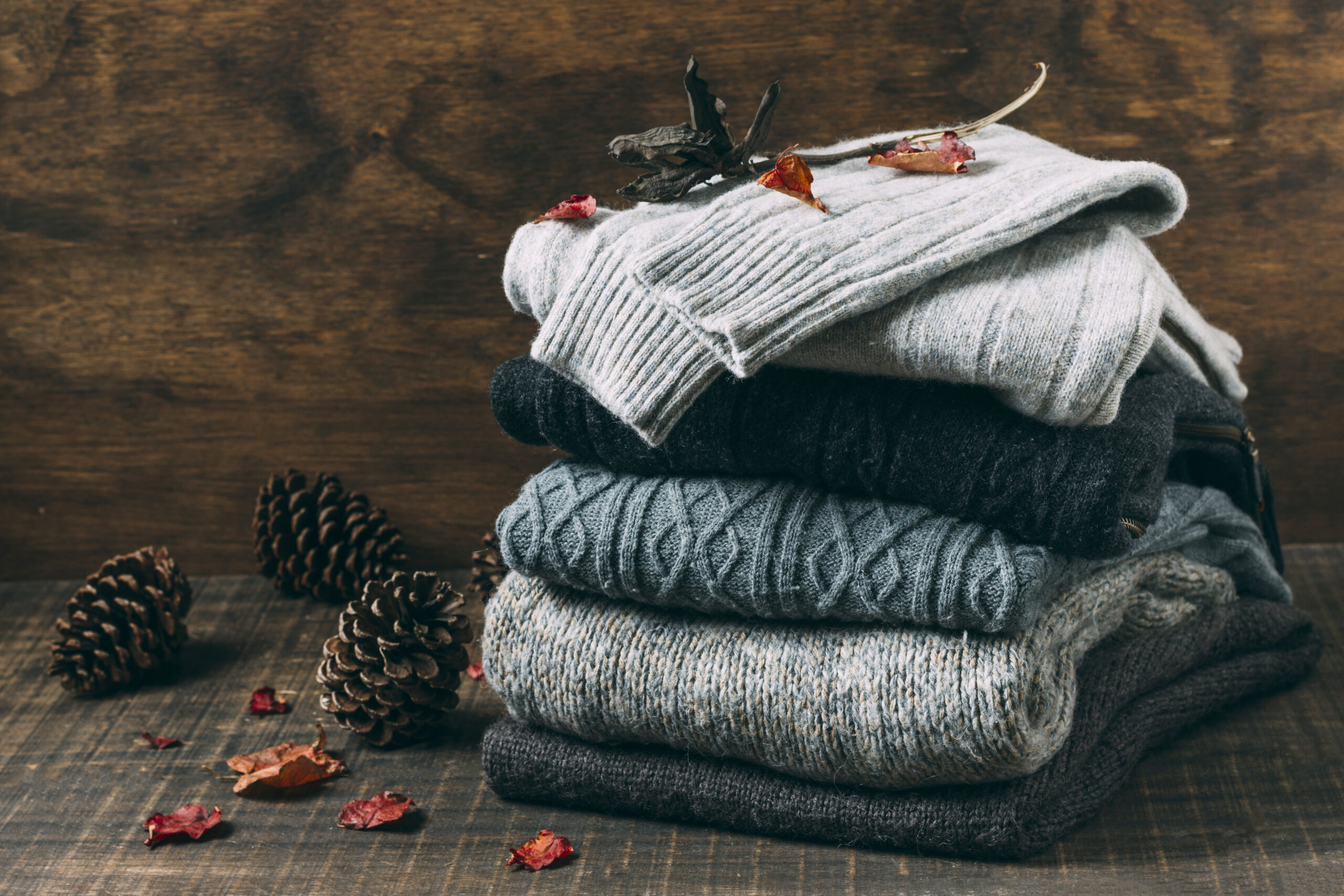Your cart is currently empty!
The production of clothing involves a variety of materials, each with its own advantages and disadvantages, offering both designers and consumers a range of choices. It is important to select a fabric that best suits the wearer’s lifestyle and needs.
Cotton
Cotton is one of the most common fabrics, known for its breathability and softness. Its main advantage is comfort and easy maintenance, making it a preferred choice, especially in warmer climates. Additionally, cotton dries quickly and is machine washable, making it a practical choice for everyday wear.
However, cotton also has some drawbacks. One of the biggest is its tendency to wrinkle easily, requiring additional effort in ironing and care. Moreover, cotton may lose some of its strength and shape in very humid conditions, making it less suitable for clothing worn in wet or rainy environments.
Wool
Wool is a popular choice, especially in colder climates. Its main advantages include excellent thermal insulation and natural moisture resistance. Woolen garments are ideal for cold weather, as wool fibers retain body heat while allowing the skin to breathe, helping to maintain a comfortable body temperature even in damp conditions.
One major drawback of wool is its higher maintenance requirements compared to other fabrics like cotton or synthetic materials. Proper wool care often requires special cleaning methods, such as hand washing or dry cleaning, which can be time-consuming and costly. Additionally, some people find wool uncomfortable to wear due to its itchiness, especially those with sensitive skin.
Polyester
Polyester is a synthetic fabric known for its durability and easy maintenance. Its advantages include high resistance to wear and tear and quick drying, making it a practical choice for both everyday clothing and sportswear. Furthermore, polyester is fade-resistant and retains its shape even after multiple washes, helping garments look new for longer.
One of the biggest drawbacks of polyester is its low breathability compared to natural fabrics like cotton or wool. This can cause discomfort in hot or humid conditions, as it does not allow the skin to “breathe” effectively. Additionally, polyester tends to generate static electricity, which can be inconvenient when wearing or handling clothing.
Silk
Silk is a luxurious and elegant fabric historically associated with high fashion. In addition to its softness and smoothness, silk is known for its ability to hold vibrant colors, creating visually stunning garments. Its light-reflecting properties give the fabric a beautiful sheen, making it especially suitable for evening dresses and formal wear. Silk is also a thermoregulating material that helps maintain body temperature in both cold and warm conditions.
Silk is resistant to dust mites and mold, making it an excellent choice for allergy sufferers. When washing silk, it is important to avoid alkaline detergents and high temperatures. Ideally, silk should be gently hand-washed in cold water using a special silk shampoo or mild detergent. After washing, it should be dried in a shaded, well-ventilated area to prevent fabric damage and color fading caused by direct sunlight.
Linen
Linen is highly valued for its cooling properties. Linen fibers can quickly absorb and evaporate moisture, helping to regulate body temperature and keeping the wearer cool in hot conditions. Linen is one of the strongest natural fibers, providing excellent durability. Unlike many other fabrics that wear down over time, linen actually becomes softer and stronger with washing.
Despite its strength and durability, linen has some disadvantages, such as its tendency to wrinkle easily. This is due to the low elasticity of linen fibers, which means they do not return to their original shape after deformation. This characteristic may require frequent ironing to keep linen garments looking smooth and presentable.

